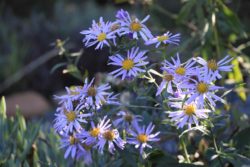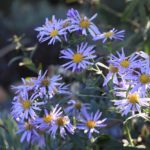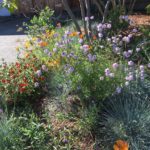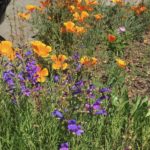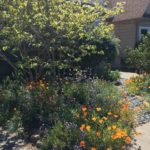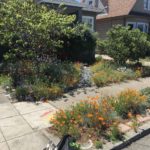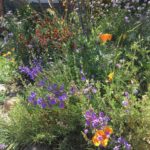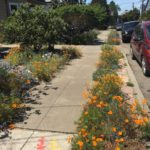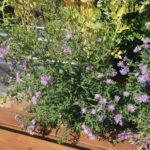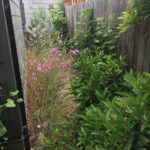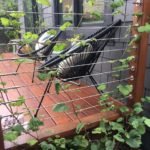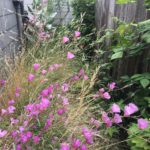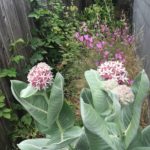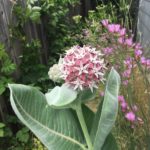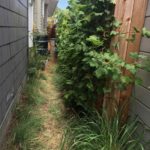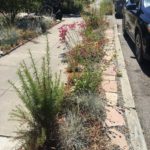Lot size: 500 sq. ft. front and 500 sq. ft. back garden
Garden Age: The front garden was installed in stages, beginning in 2016. The back garden was installed in 2020
Years on the Bringing Back the Natives Garden Tour: New this year!
Showcase Feature
Ashley, Matt, and their toddler inherited the lovely, mature native plant garden—and a relationship with the garden’s landscape designer, Naomi Vinbury—when they purchased the home in 2021.
The inviting front garden, with its delightful combinations of exuberantly colorful natives, cobble-filled and river rock-lined dry creek bed, and mature manzanitas, shows what can be done with a small space. In addition, this charming entrance garden is both beautiful throughout the year, and low-maintenance.
The back garden, designed and installed by Vinbury Garden Designs, contains a miniature woodland, tiny meadow, and an espaliered pink flowering currant, which provide places for people to enjoy, and refuge for the smaller creatures that make the world go round. The delightful plant palette ranges from elderberry, thimbleberry and ferns to California spicebush, local milkweed and native bunch grasses.
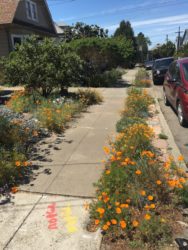 Most of the plants in the back garden were chosen because of their value to butterflies. Some of the plants, such as the California aster and goldenrod, among others, are descended from plants that would have been found in this area hundreds of years ago. As these plants are adapted to the East Bay, they will grow better here than other members of the same species that come from other places.
Most of the plants in the back garden were chosen because of their value to butterflies. Some of the plants, such as the California aster and goldenrod, among others, are descended from plants that would have been found in this area hundreds of years ago. As these plants are adapted to the East Bay, they will grow better here than other members of the same species that come from other places.
Other Garden Attractions
• In the front garden two boulders with concave surfaces furnish water for wildlife. They are located near the manzanita to provide protection to birds.
• Irrigation is installed on the whole property, though it is used minimally.
• Designer Naomi Vinbury will be at this garden all day to answer your questions—look for her in the back garden, in a pink hat.
• Stroll next door to see Angela’s native plant garden.
Gardening for Wildlife
This garden provides a safe haven for butterflies, as it contains many “keystone species”—the best plants for butterflies to reproduce on, and no insecticides, herbicides, or fungicides are used in this—or any—Tour garden. Year-round nectar sources are available for the pollinators, seeds are left to ripen and dry for the birds, and a bird bath provides water to winged creatures. Our local narrow-leafed milkweed has been planted for the monarch butterfly, as milkweed is the only plant the monarch can lay its eggs on.
Garden Talks 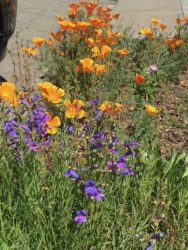
12:00 Backyard biodiversity: How to select native species for your urban garden” by Naomi Vinbury
Keystone species (watch this talk by Doug Tallamy!)
Keystone species—our own, local ecological powerhouse plants— in this garden include pink-flowering currant, California lilac, manzanita, woodland strawberry, aster, buckwheat, and goldenrod among others.
At least partially wheelchair accessible? Yes

